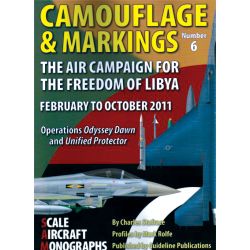Fermeture estivale du 1er août inclus au 22 août 2023
- Accueil
- › Aviation Militaire Contemporaine
- › Autres Conflits Contemporains
- › SYRIAN CONFLAGRATION /SYRIAN CIVIL WAR 2011-2013
Descriptif
The Syrian Civil War experienced an entirely unexpected transformation during its first two years. It started as unrest and a series of mass demonstrations within the Syrian population in the context of wider protest movements in the Middle East and North Africa in 2011, known as the Arab Spring. Unlike events in Egypt, Libya, Tunisia and Yemen, where oppressive governments were toppled by the end of that year, the government of Syria deployed the full force of its military, its intelligence apparatus, and paramilitary groups, launching an unprecedented crackdown that resulted in the arrest, detention and killing of many thousands. Despite its brutality, this effort backfired: it provoked mass desertions of the Syrian military and then an armed uprising.
The emerging insurgency was generally successful through 2012, although failing to capture Damascus, it secured more than half of Aleppo and Homs, the provincial capital of Raqqa, and nearly all of north-eastern and north-western Syria under its control. Although propped-up by economic and military support from the Islamic Republic of Iran and the Russian Federation, the government of Syria was nearing the brink of collapse during the first half of 2013 when, prompted by Tehran, Hezbollah – a Shi’a Islamic militant group and political party from Lebanon – entered the conflict on its side. Soon after, Hezbollah was reinforced by significant contingents of Iranian-sponsored Shi’a from Iraq, Lebanon and elsewhere, followed by volunteers from Iran, including crack units of the Islamic Revolutionary Guards Corps. Meanwhile, already split along the lines of Syria’s complex demography, much of the insurgency transformed from a secular and non-sectarian movement into proxies of various foreign powers, foremost Saudi Arabia and Qatar, but also Turkey and Kuwait. Furthermore, foreign Jihadists motivated by al-Qaida joined the fray, aiming to establish an Islamist state and clandestinely cooperating with the government, they fell upon the insurgency.
Thus, an extremely complex conflict – which then not only spilled over the border into Lebanon, but had a major impact upon Iranian-Saudi relations, and relations between the West, Iran and a number of Arab countries – came into being, the outcome of which was anything but predictable.
This revised edition of Syrian Conflagration draws on extensive research, including first-hand accounts, and provides a compelling overview of the first three years of the ongoing conflict in Syria. The book features 120 full-colour photographs, 27 full-colour artworks and four colour maps.
Les avis sur le produit SYRIAN CONFLAGRATION /SYRIAN CIVIL WAR 2011-2013
Nos clients ont aussi aimé
|
SYRIAN CONFLAGRATION /SYRIAN CIVIL WAR 2011-2013
|
Ajouter au panier |
- Les Pionniers de l'aviation
- Aviation militaire - Première Guerre mondiale
- Entre Deux Guerres
-
Aviation militaire - Seconde Guerre mondiale
- Nouveautés Seconde Guerre mondiale
- Aviation Militaire Française
- Aviation Militaire britannique
- Aviation Militaire US
- Aviation Militaire russe - URSS
- Aviation Militaire - autres Forces Alliées
- Aviation Militaire Allemagne
- Aviation Militaire Italie
- Aviation Militaire Japon
- Aviation Militaire - Autres Force de l’Axe
- Opérations Front Ouest
- Opérations Front Méditerranée
- Opérations Front Est
- Opérations Front Pacifique
- Opérations Front Atlantique
- Aviation Militaire à Réaction
- Magazines Seconde Guerre mondiale
- Récits, Biographies Seconde Guerre mondiale
- Livres Divers Seconde Guerre mondiale
-
Aviation Militaire Contemporaine
- Nouveautés aviation militaire contemporaine
- Aviation militaire contemporaine française
- Aviation militaire contemporaine britannique
- Aviation militaire contemporaine US
- Aviation militaire contemporaine URSS, Russie, Pacte de Varsovie
- Aviation militaire contemporaine Europe et OTAN
- Aviation militaire contemporaine autres forces
- Guerre d'Indochine
- Guerre de Corée
- Guerre d'Algérie
- Guerre du Vietnam
- Guerre des Malouines - Falklands
- Guerres du Golfe - Irak - Afghanistan
- Autres Conflits Contemporains
- Hélicoptères Militaires
- Drones
- Magazines Aviation militaire contemporaine
- Collections Aviation militaire contemporaine
- Technologie - Prototypes - Expérimental
- Aviation militaire spécialisée - Transport - Espions - Surveillance
- Livres Divers Aviation militaire contemporaine
- Aéronavale
-
Aviation civile et Aviation Commerciale
- Nouveautés Aviation civile et aviation commerciale
- Aéropostale
- Aviation commerciale Avant Guerre
- L’Ere des Propliners - Les Hélices
- Jets Aviation commerciale
- Histoire des Compagnies Aériennes
- Registres Aviation commerciale
- Ouvrages Divers Aviation commerciale
- DVD Aviation commerciale
- Aéroports
- Magazines aviation civile et commerciale
- Catastrophes aériennes
- Formation personnel navigant
- Formation des pilotes aviation civile et aviation commerciale
- Livres divers Aviation commerciale
- Aviation française
- Hélicoptères - Autogires
- Aviation légère, aviation tourisme
-
Les Grandes Collections
- Nouveautés des Collections
- 4+ Publications
- Aerofax
- Les Ailes françaises
- Aircraft In Detail
- Air Doc
- Airdoc Smoke Trails
- AIRfile
- AJ Press
- Albatros
- Ali Straniere in Italia
- Airlife Combat Legend
- Ali d’Italia
- Altipresse : Histoires Authentiques
- Avions et Pilotes
- Batailles aériennes
- Camouflage & Markings
- Ciel de Guerre
- Coccarde Tricolori
- Daco
- Docavia
- Im Focus
- Ginter Air Force Legend
- Ginter Naval Fighters
- HT Model
- IBN
- Icare
- Kagero Legend of Aviation
- Kagero Lotniczne
- Kagero Monographie
- Kagero SMI Library
- Kagero Topcolors
- Kagero Top Drawings
- Kagero Units
- Kagero Topshots
- Luftwaffe at War
- Matériels de l'Armée de l'Air
- MBI Publishing
- Mini Docavia
- Mushroom
- Nordic Air Power
- Osprey Aircraft of the Aces
- Osprey Air Vanguard
- Osprey Airwar
- Osprey Combat Aircraft
- Osprey Duel
- Osprey Elite
- Osprey Modelling
- POL
- Rae
- Red Star
- SAM Air Data
- SAM Modeller Datafile
- Squadron Signal in action
- Squadron Signal In Detail and Scale
- Squadron Signal spéciaux
- Squadron Signal Walk Around
- Suomen Ilmavoimien Historia (Filnande)
- Warbird Tech
- Warpaint
- Warplane
- WAW
- Wings of the Black Cross
- Wingmasters Hors série
- WYD
- Bandes Dessinées - Ouvrages de Peintures - Photos aviation
-
Maquettes à monter et Die-Cast
- Nouveautés maquettes à monter et Die Cast
- Trumpeter/Revell/Roden/RS Models à monter 1/72ème
- Accessoires Aéroport
- Dragon Milit. 1/72
- Dragon militaires 1/400
- Herpa 1/500
- Herpa 1/400
- AZUR/FRROM maquettes à monter 1/72ème
- A&A Models/ACADEMY/AIRFIX/AMODELARMA HOBBY/AZUR/DORA WINGS/FRROM/SPECIAL HOBBY maquettes à monter 1/72ème
- Hasegawa/Heller/Hobby Boss/IBG/ICM/ITALERI/Mister Craft/ZVEZDA-maquettes à monter 1/72ème
- Gemini Civil 1/400
- Dragon civil 1/400
- Divers Modèles à monter et Die Cast
- Multimédia
- Conquête spatiale, espace
- Calendriers, Histoire militaire, jeux, sets de peintures et produits divers
- LE KIOSQUE
Informations






